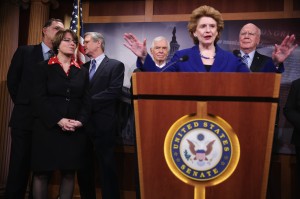Once again, Austin Energy has reduced solar incentives with less than 2 hours notice. This time, the changes will impact both residential and commercial customers.
As of 3pm today, the rebate for a residential solar installation is $1.10 per watt (down from $1.25) and the commercial performance based incentive (PBI) is $0.09 per kilowatt-hour (kWh) (down from $0.10).
You might well be asking why Austin Energy made these changes and why so suddenly.
The memo released by Austin Energy indicates that the decrease in the residential rebate was made because Austin Energy wanted to make sure that it didn’t exceed it’s budget for such rebates (the fiscal year ends in September). On the face, that sounds like a responsible move, but there was another option. Austin Energy could have reasonably anticipated this budget shortfall because the same thing happened last year. It could have requested a larger solar rebate budget instead of trying to cut that budget by about 42% (a proposal that was changed due to public outcry).
The reason stated for reducing the commercial PBI is that Austin Energy doesn’t want to make commitments now that would force it to exceed it’s planned FY2015 budget. PBI incentives are paid for each kWh for 10 years, so this kind of foresight is needed, but, again, another option would be to ask for a larger budget for commercial solar in FY2015.
Before you get to thinking that our answer to everything is just “spend more,” let’s clarify that spending more now could be offset with spending less later and we’d get more solar for every dollar spent.
Here’s why – Right now, and through the end of 2016, the federal government offers a 30% solar investment tax credit. So, for anyone or any business with tax liability, the federal government basically pays you back for 30% of the cost of your solar installation. In essence, Austin Energy is getting a match (about 82%, assuming installations are $3.40/watt, which is what Austin Energy has been reporting as average) for its rebate expenses. When the federal solar tax credit ends after 2016, Austin Energy may find that its solar rebate program isn’t quite as popular and it may need to spend more per watt to keep solar adoption growing, at least for a few years.
Spending more on solar rebates and the commercial PBI now could provide a buffer that will allow us to spend less in those post solar tax credit years.
Austin Energy says that it must make announcements about solar rebate and PBI levels without much notice because there would be a mad rush to get projects in under the higher incentive levels if solar contractors and customers knew ahead of time. There is some logic in that, but what has suffered is any opportunity for public input on changes being made. There is no set formula for reducing rebates, so Austin Energy simply adjusts the levels when and how it see fit. This leaves no room for ensuring that these changes align with the priorities of of the city.
It was less than 2 years ago that payback times for residential solar installations in Austin were bouncing around in the 5 to 6 year range. Now they’re at about 10 years and Austin Energy seems quite content with that change.
One option would be to establish a formulas that could be based on the capacity of residential and commercial solar installations or the average payback time, or some combination that would determine when and how Austin Energy’s incentives would be adjusted.
More importantly though, this problem of adjusting solar incentives to meet artificial budget targets, instead of trying to maximize solar adoption while federal rebates are still available would be minimized if Austin Energy had strong residential and commercial solar goals to achieve. Austin Energy’s overall solar goal should be doubled to 400 megawatts (MW) by 2020. Even more importantly, the local solar goal should be doubled to 200 MW and the residential and commercial solar goal to 100 MW. Only with more ambitious goals will Austin Energy be forced to prioritize the expansion of solar.
You can help make this change happen:
The Austin Generation Resource Planning Task Force, which has the job of making recommendations about Austin Energy’s energy plan for the coming 10 years, has 2 more meetings scheduled – 2:30 pm this Wednesday, June 18, and 2:30 pm next Monday, June 23, both in the bull pen at City Hall. If you care about expanding Austin Energy’s solar goals as a way of keeping its solar programs robust, show up and speak at citizen communication at the start of the meeting. Arrive a few minutes early to sign up because only the first 5 to sign up get to speak. You will be limited to 3 minutes. It won’t take you long and the task force really does want to hear from the public.






